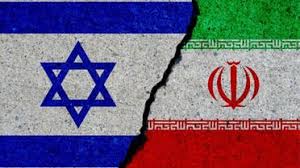Tensions between Iran and Israel reached a critical point today following a destructive Israeli airstrike on the Iranian embassy in Damascus. In a swift retaliation, Iran launched a barrage of missiles targeting Israeli defense installations, intensifying concerns of a broader conflict on the horizon.
Amidst this escalating crisis, a comparative analysis of the military, economic, and strategic dynamics between Iran and Israel sheds light on their respective capabilities and potential outcomes.
Iran ???????? vs Israel ????????
Total Population:
Iran ????????: 87.6M
Israel ????????: 9.04MAvailable Manpower:
Iran ????????: 49.05M
Israel ????????: 3.80MFit-for-Service:
Iran ????????: 41.17M
Israel ????????: 3.16MMilitary Personnel:
Active Personnel:
Iran ????????: 610K
Israel ????????: 170KReserve Personnel:
Iran ????????: 350K…— World of Statistics (@stats_feed) April 14, 2024
Military Comparison
Iran holds a notable advantage in manpower, boasting 610,000 active personnel compared to Israel’s 170,000. However, Israel maintains a larger reserve force, with 465,000 compared to Iran’s 350,000. The balance of available manpower could significantly influence the course of the conflict.
Assessing Airpower
Israel maintains a slight edge in total aircraft, possessing 612 compared to Iran’s 551. Furthermore, Israel possesses more fighter aircraft and attack helicopters, potentially granting them an advantage in aerial engagements.
Naval Strength
Iran possesses a formidable naval fleet consisting of 101 vessels, including 19 submarines, whereas Israel’s fleet comprises 67 vessels and 5 submarines. Control of maritime territory could be pivotal for both sides in securing strategic positions and conducting naval operations.
Evaluating Financial Resources
While Iran maintains a lower defense budget at $9.95 billion compared to Israel’s $24.4 billion, it holds a stronger financial position with lower external debt ($8 billion compared to Israel’s $135 billion). Despite this, Iran’s foreign reserves ($127.15 billion) lag behind Israel’s ($212.93 billion), highlighting potential constraints on sustaining military operations.
Background: Recent Escalations
Iran’s attack on Israeli territory follows a suspected Israeli strike on the Iranian consulate in Damascus, resulting in the deaths of 13 individuals. This marked the first-ever direct attack by Iran on Israeli soil from Iranian territory, escalating tensions between the two nations.
Iran’s retaliatory assault, codenamed Operation True Promise, commenced on Saturday night, involving a massive aerial attack utilizing over 120 ballistic missiles, 170 drones, and more than 30 cruise missiles. Israel’s military reported intercepting the majority of the projectiles, with assistance from allies such as the United States, the United Kingdom, and France.
The attack targeted various locations across Israel, including cities like Tel Aviv and Jerusalem, prompting widespread alerts and evacuations. While most projectiles were intercepted, some inflicted minor damage and casualties, including a severely injured seven-year-old girl.
Motivations and Consequences
Iran’s attack was purportedly in retaliation for an Israeli strike on an Iranian consular building in Damascus earlier in the month, resulting in casualties among the Islamic Revolutionary Guard Corps. The escalation underscores the volatile nature of regional tensions and the potential for wider conflict.
As international leaders condemn the attacks and convene meetings to discuss the situation, the specter of further escalation looms large. The comparative analysis underscores the complex interplay of military capabilities, economic resources, and strategic considerations that could shape the outcome of the Iran-Israel confrontation.
Stay tuned for further updates as developments unfold in this rapidly evolving situation.














